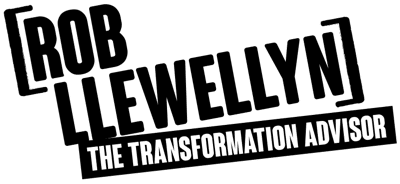 The world is now rich in content, consultants and digital minds evangelising the prerequisites of digital leadership and transformation, along with what will happen to companies that fail to innovatively leverage digital to build new business models, enter new markets, and become less susceptible to disruption.
The world is now rich in content, consultants and digital minds evangelising the prerequisites of digital leadership and transformation, along with what will happen to companies that fail to innovatively leverage digital to build new business models, enter new markets, and become less susceptible to disruption.
It’s common knowledge among many in the business of transformation that culture, leadership, strategy organisational structures and talent, data, innovation, digital and transformation management capabilities, brand, governance, digital business models, agility and technology (two-speed of course), are all present in the digital state of mind that the best leaders have adopted.
Speaking with the CIO of a multi-national yesterday, his sentences were sprinkled with these words, and others like him who get-it and practice it, are indeed a pleasure to work with. These are the fine digital minds that are leading companies to a new place.
Fine Digital Minds are Like Fine Wine Minds
The CIO I spoke with, and others like him, are the digital equivalent of fine wine producers. They are the “Digital Masters” that Didier Bonnet, George Westerman and Andrew McAfee wrote about in Leading Digital back in 2014. They are certainly not the folk who are, right now, building the digital silos that will help render IDC’s prediction below true.
By 2018, 70% of siloed digital transformation initiatives will ultimately fail due to insufficient collaboration, integration, sourcing or project management.
– IDC
Like making fine wine, only the foolhardy rush out to select the digital equivalent of grapes (cloud, mobile, etc.) and believe they will produce something worth serving up to stakeholders and markets. But they are out there. The foolhardy that treat digital business transformation with the same contempt that ERP suffered for so long, leaving companies littered with carnage that took years to clean up. Those are the minds that are blinkered by technology. They are not the minds of digital masters.
Like digital masters, the minds of the best wine producers are focused on far more than simply picking grapes, fermentation and drinking. From location, soil composition, and time to harvest dates, through to maceration time, temperature, and customer taste, wine masters know their livelihood would dry up if they compromised any part of the journey and failed to approach wine production holistically. They can't afford to put a sour taste into the mouths of their customers.
The future of leaders and companies will be exposed to similar consequences if they fail to approach transformation holistically, placing a bitter taste into the mouths of their stakeholders and customers. Their markets will become increasingly invaded by new players, and company value will erode. The Chairman will grill the CEO, who will in turn grill the CIO and others. Even CFOs will be on the hook if they fail to measure and report the planned and realised non-financial value of digital transformation. Leaders will be replaced, and their once-promising careers will be cut-short as their minds become antiquated and redundant in the digital decade ahead.
How to Mature a Digital State of Mind
Like fine wines, a digital state of mind takes time to mature. The list in paragraph-two is complex. Bright minds like Gary Hamel can lecture for days about culture, and Andrew Kakabadse can do the same on leadership and governance. These and others could spend weeks and months coaching leaders to mature specific areas of their digital leadership minds. Amazon floods us with options to learn more from thought leaders who have put the digital equivalent of pen to paper, and CXO Weekly has delivered over 300 articles in the last year about digital business transformation, sharing some of the world's finest content on the subject.
But the mind of a digital leader takes time to mature, and older minds must first shake off the dust that might have settled on their traditional ways of thinking and get prepared to embrace the new.
A McKinsey article released last week starts by stating;
Digital isn’t merely an add-on; it’s a way to think differently about business models, customer journeys, and organizational agility.
This is the language of holistic digital business transformation. A different language to that used by those focused simply on implementing cloud, mobile, etc. and then figuring how the company can derive value from it. That's a language that puts the proverbial cart before the horse.
McKinsey's Take on Achieving a Digital State of Mind
Listen to McKinsey's Karel Dorner and David Edelman talk with Barr Seitz about why, decades into the digital revolution, companies are still trying to define what digital really is, and are struggling to make the most of it.
Read the transcript here
Dave Edelman explained that he sees digital as being three things:
1. Levers by which you think about new ways to assemble your overall business model, the way you make money, the way you deliver a value proposition overall.
2. A new way to interact with customers to take your value proposition and bring it to market.
3. A different way of operating within a company, and within a broader ecosystem, to actually make those products and services happen.
The hard thing for businesses is that looking at digital through those lenses can be so different from the way you operate now.
– McKinsey
